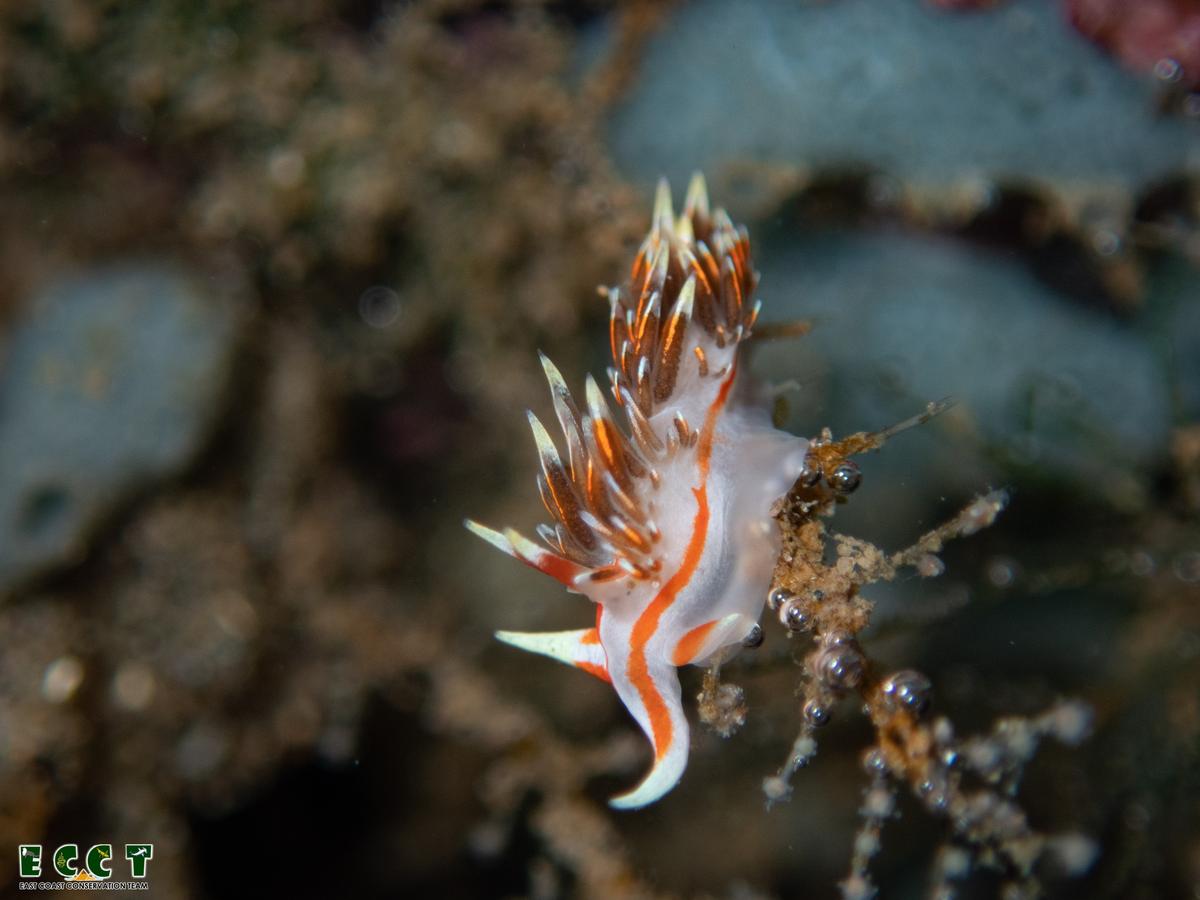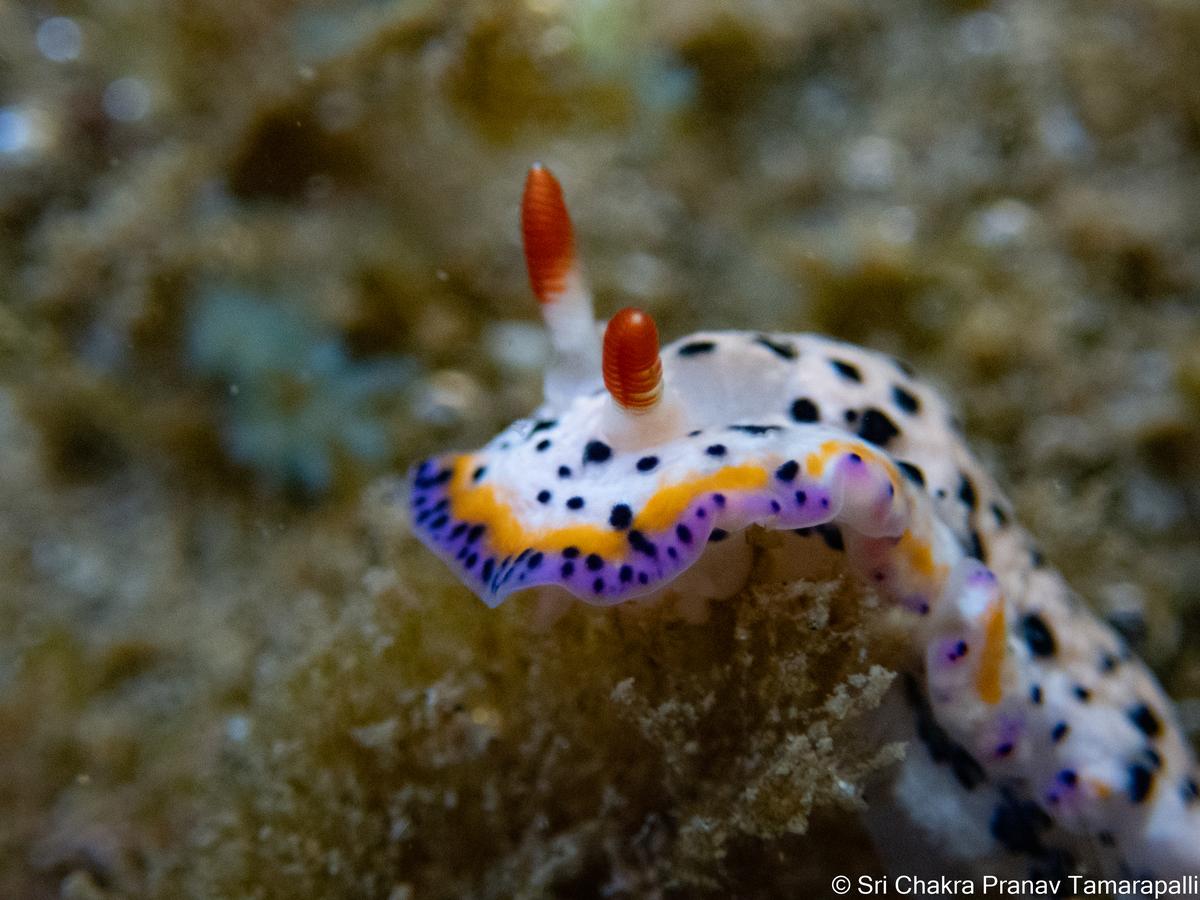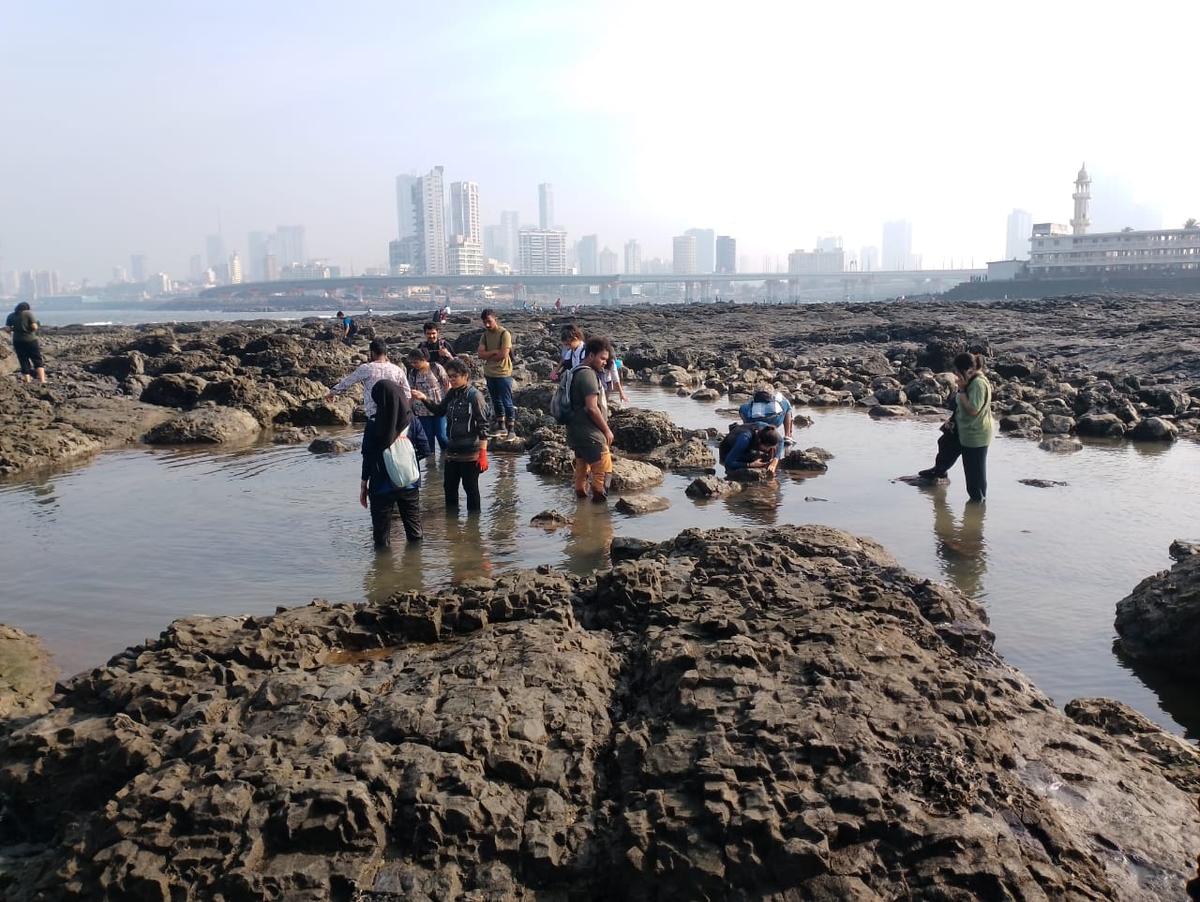Our Terms & Conditions | Our Privacy Policy
The first Intertidal Bioblitz uncovers marine wonders in India’s coasts
The intertidal pools of Rushikonda in Visakhapatnam was brimming with life that morning as the East Coast Conservation Team waded through the shallow waters, scanning the rocky crevices for marine wonders. Amid the sway of nudibranchs and sea grapes, Kusum Gorentla, an ECCT volunteer, spotted a delicate, ribbon-like object floating by. Its gentle undulations resembled the feathery arms of a crinoid, a feather star species often found clinging to submerged rocks.
The Pseudoceros bifascia, the first-ever record of this species from mainland India, that was spotted during intertidal bioblitz in Visakhapatnam recently.
| Photo Credit:
SPECIAL ARRANGEMENT
However, as they examined it closely, they realised it was something far more intriguing — a flatworm. Further identification confirmed it as Pseudoceros bifascia, marking the first-ever record of this species from mainland India, expanding its known range and adding a new chapter to the marine biodiversity of the country’s eastern coastline.
Discovered only last year in Lakshadweep, this species’ presence along the Andhra Pradesh coast highlights the rich, yet largely undocumented, marine biodiversity of the region. This unexpected discovery was among the key findings of the recently-concluded Intertidal Bioblitz, a nationwide effort to document marine life across India’s coastal regions. The event, hosted jointly by the Coastal Conservation Foundation and East Coast Conservation Team, brought together researchers, citizen scientists, and conservationists from Mumbai, Andaman, Goa and Visakhapatnam, shedding light on the vibrant but often overlooked intertidal ecosystems.
Military phidiana, a marine species spotted during the Intertidal Bioblitz in Visakhapatnam.
| Photo Credit:
SPECIAL ARRANGEMENT
This first nationwide initiative on intertidal species was done over a 10-day period and clocked in more than 3,600 observations and 514 species in iNaturalist app, a global science citizen tool. “The observations from Visakhapatnam have been very encouraging. In fact, there were 1,533 observations of 227 species done from Visakhapatnam alone. This will give a big boost to the marine life documentation of the region. The discovery of Pseudoceros bifascia at Rushikonda not only underscores the need for further exploration but it also reaffirms how much of India’s marine biodiversity is still waiting to be uncovered,” says Sri Chakra Pranav of ECCT. During the bioblitz, two undescribed species and more than 10 first records in Visakhapatnam and one first record in mainland India were reported.
As many as 57 people contributed in the Intertidal Bioblitz from Visakhapatnam with a majority of observations done by Chandrashekhar Durgasi, Deepu Visweswar, Pranav, Kusum and Samuel Prakash from Sea Trust.
Apart from the first record of Pseudoceros bifascia from mainland India, one more undescribed flatworm species was found, which resembled an electric flatworm. Deepu, a researcher in Andhra University and a member of ECCT, is focussing on these species.
The species Hypselodoris sagamensis spotted during the Intertidal Bioblitz in Visakhapatnam.
| Photo Credit:
Special Arrangemenrt
“Night tidepooling sessions revealed a whole lot of biodiversity with sightings of butterfly fish, surgeon fish, three types of porcupine fish and a lot more beauties. School children who attended the walks witnessed a laced moray eel. When we photographed it, a juvenile angel fish was hiding behind it as well!” says Deepu.
Participants at the Intertidal Bioblitz in Mumbai.
| Photo Credit:
SPECIAL ARRANGEMENT
Mumbai suburban recorded 80 species and while metropolitan led by Shaunak Modi of Coastal Conservation Foundation, recorded 120 species during the biobltiz. Some of the species observed include old-woman octopus, orange-striped hermit crab, mangrove leaf slug, tiger moon snail and highfin moray.
Meanwhile, the intertidal zones of the Andaman islands uncovered more than 70 species over the course of three intertidal walks in different locations. Some of the key findings included bubble snails, flatworms, and sea slugs. Sea cucumbers, moray eels, an octopus and even a juvenile stingray emerged from the shadows, showcasing the incredible diversity of the Andaman intertidal.
Notes from the Andamans
The most common species, such as yellow sponges, sea cucumbers, sand gobies, corals, and sea grasses, form the backbone of the ecosystem, providing a glimpse into the intricate relationships that govern this underwater world. The coral-dominated landscape, interspersed by sea grass patches and rocky pools, stands in stark contrast to the sponge and hydroid-dominated coastlines of Maharashtra and Goa.
The team was led by Aditya Gadkari, Prajakta Kuwalekar, Sagar Nambiar, Swayanka Sahoo, Harshal Patil, from the group Marine Life of Andamans. The intertidal zone at the natural bridge, located on the Southwest of Neil Island, is unique in that it draws a lot of tourists during the low tide where tidepools thrive with life. The fourth global coral bleaching event in 2024 had a severe impact on this region of the Andaman islands. “A lot of soft coral was affected in this area but now we are mapping the recovery of the sight through bioblitz,” says Prajakta, a scuba diver.
Highlighting some of signs of habitat destruction, Prajakta says: “The crowds that come to the natural bridge have resulted in degradation of the habitat with accidental trampling of marine life, some intentionally offering the species food which their systems are not accustomed to. Another interesting side-effect is that marine life such as mantis shrimp, crabs, eels and other fish in pools located closest to the bridge have become considerably bolder than elsewhere on the island.”
“One of the interesting observations from Andaman islands includes the absence of sandy bed species like pearly sea anemone, which are now replaced by species like carpet sea anemone along the tidepools,” says Sagar Nambiar, a zoologist and scuba dive instructor in the Andaman islands.
As the inaugural intertidal bioblitz of India comes to a close, it marks the beginning of an exciting annual tradition, where scientists, researchers, and enthusiasts converge to unravel the secrets of India’s diverse coastlines, fostering a deeper appreciation and conservation of India’s marine biodiversity, one tide at a time.
Published – February 13, 2025 03:54 pm IST
Images are for reference only.Images and contents gathered automatic from google or 3rd party sources.All rights on the images and contents are with their legal original owners.






Comments are closed.